Female Heavy Armor, what's up with the briastplate?
-

Kelvin - Posts: 3405
- Joined: Sat Nov 17, 2007 10:22 am
-

Alex Vincent - Posts: 3514
- Joined: Thu Jun 28, 2007 9:31 pm
Any specific armors you have in mind?
I certainly agree regarding the Wolf armor, Steel Plate and Ebony Plate. They're a little too well defined for my taste and I have a hard time imagining they'd be that effective. That crevice between the briasts would be really good for directing blows into the middle of the chest.
I certainly agree regarding the Wolf armor, Steel Plate and Ebony Plate. They're a little too well defined for my taste and I have a hard time imagining they'd be that effective. That crevice between the briasts would be really good for directing blows into the middle of the chest.
-
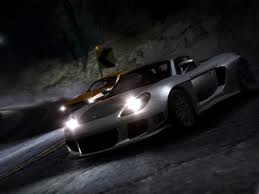
Katie Pollard - Posts: 3460
- Joined: Thu Nov 09, 2006 11:23 pm
Specifically, I was thinking of the steel plate armor. As far as effectiveness goes, it just doesn't make sense to shape it like that.
Lydia looks really good in a suit of glass armor.
Lydia looks really good in a suit of glass armor.
-

Alister Scott - Posts: 3441
- Joined: Sun Jul 29, 2007 2:56 am
It's a briastplate, enough said.
However, if you want a 'technical' answer (apart from the fact this is a game and Beth can do what they want), when armour takes a hit the armour does two things: First, it (hopefully) prevents pentration of the blade etc, preventing cutting; Secondly, it spreads the force of the blow across the face of the armour, hopefully spreading the impact wide enough to prevent bones being broken or disabling bruising.
Studies of medieval weaponry and armour have shown that jousting injuries pattern match modern car crash injuries, where lance heads hitting armour cause similar impact damage to dashboards and car steering wheels, and the shock of hitting at speed roughly matches the whiplash effects of a car accident.
Why does female armour in Skyrim have a big bust? Probably because the females in Skyrim have big busts...and because players would complain. It seems to be a design/development policy to have female characters in games with overly emphasised female traits...which really does nothing for legitimising video gaming as a serious art or entertainment medium, despite it's popularity.
However, if you want a 'technical' answer (apart from the fact this is a game and Beth can do what they want), when armour takes a hit the armour does two things: First, it (hopefully) prevents pentration of the blade etc, preventing cutting; Secondly, it spreads the force of the blow across the face of the armour, hopefully spreading the impact wide enough to prevent bones being broken or disabling bruising.
Studies of medieval weaponry and armour have shown that jousting injuries pattern match modern car crash injuries, where lance heads hitting armour cause similar impact damage to dashboards and car steering wheels, and the shock of hitting at speed roughly matches the whiplash effects of a car accident.
Why does female armour in Skyrim have a big bust? Probably because the females in Skyrim have big busts...and because players would complain. It seems to be a design/development policy to have female characters in games with overly emphasised female traits...which really does nothing for legitimising video gaming as a serious art or entertainment medium, despite it's popularity.
-
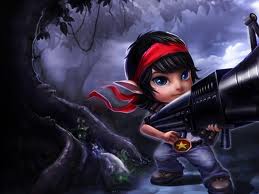
Jessie Butterfield - Posts: 3453
- Joined: Wed Jun 21, 2006 5:59 pm
It's a briastplate, enough said.
However in Skyrim it's more likehttp://steamcommunity.com/profiles/76561197988732882/screenshot/649876689769992010?tab=public
 (and that is an unmodified max weight version).
(and that is an unmodified max weight version).And i agree, this game has some of the most form-fitting female heavy armors i've seen. DA:O had some heavy armors like that too, but not that much

-
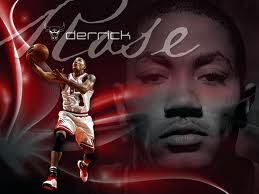
Erich Lendermon - Posts: 3322
- Joined: Sat Nov 03, 2007 4:20 pm
Why does female armour in Skyrim have a big bust? Probably because the females in Skyrim have big busts...and because players would complain. It seems to be a design/development policy to have female characters in games with overly emphasised female traits...which really does nothing for legitimising video gaming as a serious art or entertainment medium, despite it's popularity.
Yes, Steel Plate armor exaggerates the features, but then again, it adds at least another inch in all directions just for the padding, and "rounds out" the form by bolting hemispheres to the chest rather than following the true shape of the underlying anatomy.
-

dav - Posts: 3338
- Joined: Mon Jul 30, 2007 3:46 pm
I think if females had been regular armed Knights in armour in reality say in Roman times or even Medieval, their armours would be shaped to reflect their femaleness.
Now you guys have got to do a bit of historical research but most of all think like an ancient person not a modern day person with our `fear of nudity` hang ups. In ancient days things were very literal. Look at most male armours, many were shaped to emphasis the male chest and abdomen to make him look tougher and heroic and to emphasise maleness. It would be no surprise to me if the boob section of female armours were pronounced to show this is female armour and not male armour.
Now some might point to Joan of Arc`s armour as being the same as the men`s, but joan was unique and females in armour was pretty much unheard of, therfore there was no design, nor thinking of female battle wear.
I reckon in some ways, Skyrim is closer to realistic regarding female armours than it realises.
Now you guys have got to do a bit of historical research but most of all think like an ancient person not a modern day person with our `fear of nudity` hang ups. In ancient days things were very literal. Look at most male armours, many were shaped to emphasis the male chest and abdomen to make him look tougher and heroic and to emphasise maleness. It would be no surprise to me if the boob section of female armours were pronounced to show this is female armour and not male armour.
Now some might point to Joan of Arc`s armour as being the same as the men`s, but joan was unique and females in armour was pretty much unheard of, therfore there was no design, nor thinking of female battle wear.
I reckon in some ways, Skyrim is closer to realistic regarding female armours than it realises.
-
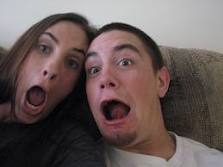
Guy Pearce - Posts: 3499
- Joined: Sun May 20, 2007 3:08 pm
(snip)
You need to keep in mind, though, that part of plate armor design was not just to stop, but also to deflect incoming blows. If the angle of the blow or arror is off, a portion of it's energy is directed away. That's where the problem with having such defined briasts comes in. Any blow landing on the insides of the briasts will be directed into the center of the chest and strike with nearly full force.
-
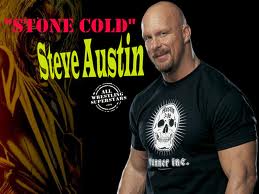
Farrah Lee - Posts: 3488
- Joined: Fri Aug 17, 2007 10:32 pm
The U.S. Army is currently working to reshape the hard plates that go into the combat armor vests, so that women have a plate that is more comfortable to wear. Not sure if such a thing would be necessary for most women with medieval plate armor, however. The modern military body armor has less "padding" beneath the hard plate, and so a plate that doesn't conform to the body will rub and press uncomfortably at certain spots, rather than more gently across a larger area. Ancient and medieval plate armor, however, were meant to be worn over a somewhat thicker layer of padding, like quilted clothing.
God only knows how anybody wore that stuff in a hot climate.
God only knows how anybody wore that stuff in a hot climate.
-
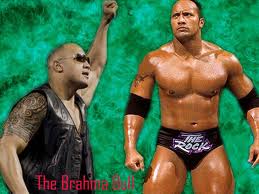
Eve(G) - Posts: 3546
- Joined: Tue Oct 23, 2007 11:45 am
You need to keep in mind, though, that part of plate armor design was not just to stop, but also to deflect incoming blows. If the angle of the blow or arror is off, a portion of it's energy is directed away. That's where the problem with having such defined briasts comes in. Any blow landing on the insides of the briasts will be directed into the center of the chest and strike with nearly full force.
From a practical standpoint, defining the chest is a very bad choice.
From a game standpoint, it looks nice. XD
-

phillip crookes - Posts: 3420
- Joined: Wed Jun 27, 2007 1:39 pm
I like it and all, but it just doesn't seem like it would perform the appropriate function.
http://masseffect.wikia.com/wiki/File:313378.jpg
-

Kayleigh Mcneil - Posts: 3352
- Joined: Thu Jun 29, 2006 7:32 am
You need to keep in mind, though, that part of plate armor design was not just to stop, but also to deflect incoming blows. If the angle of the blow or arror is off, a portion of it's energy is directed away. That's where the problem with having such defined briasts comes in. Any blow landing on the insides of the briasts will be directed into the center of the chest and strike with nearly full force.
True, but that would depend on whether it would be that much of a disadvantage. It may turn out that the blade or spear was deflected more outward than inward as the female fighter is not exactly going to sit there and let herself be struck central easily. Also you need to think like the people of the times and not so much like a technical designer. It was often worth more to show what six you were and to be proud of it. And just as men were proud of their six as warriors, i reckon women would have a new found proudness of their six as warriors too. Why hide that?
Like I said, you gotta think like these people, not like a 21st century person where everyone tries to hide what six they are and be a all the same if you see what i mean.
-
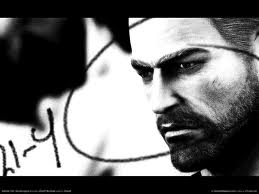
Hairul Hafis - Posts: 3516
- Joined: Mon Oct 29, 2007 12:22 am
I think if females had been regular armed Knights in armour in reality say in Roman times or even Medieval, their armours would be shaped to reflect their femaleness.
Now you guys have got to do a bit of historical research but most of all think like an ancient person not a modern day person with our `fear of nudity` hang ups. In ancient days things were very literal. Look at most male armours, many were shaped to emphasis the male chest and abdomen to make him look tougher and heroic and to emphasise maleness. It would be no surprise to me if the boob section of female armours were pronounced to show this is female armour and not male armour.
Now some might point to Joan of Arc`s armour as being the same as the men`s, but joan was unique and females in armour was pretty much unheard of, therfore there was no design, nor thinking of female battle wear.
I reckon in some ways, Skyrim is closer to realistic regarding female armours than it realises.
Now you guys have got to do a bit of historical research but most of all think like an ancient person not a modern day person with our `fear of nudity` hang ups. In ancient days things were very literal. Look at most male armours, many were shaped to emphasis the male chest and abdomen to make him look tougher and heroic and to emphasise maleness. It would be no surprise to me if the boob section of female armours were pronounced to show this is female armour and not male armour.
Now some might point to Joan of Arc`s armour as being the same as the men`s, but joan was unique and females in armour was pretty much unheard of, therfore there was no design, nor thinking of female battle wear.
I reckon in some ways, Skyrim is closer to realistic regarding female armours than it realises.
To the OP, stick with regular steel or orcish armor. It has a reasonable briastplate, and with smithing perks you'll be able to make it serviceable for a long time.
http://i678.photobucket.com/albums/vv146/gmosko/VeledaLydia-1.jpg
http://i678.photobucket.com/albums/vv146/gmosko/sharorcishhelmet.jpg
-

dell - Posts: 3452
- Joined: Sat Mar 24, 2007 2:58 am
Catering to modern Korean MMORPG players.
And they just couldn't let the gauntlet thrown by Dragon Age 2 Isabela stay on the ground just like that.
And they just couldn't let the gauntlet thrown by Dragon Age 2 Isabela stay on the ground just like that.
-
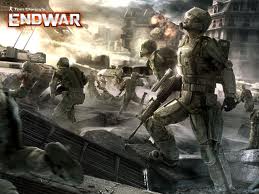
NAkeshIa BENNETT - Posts: 3519
- Joined: Fri Jun 16, 2006 12:23 pm
You need to keep in mind, though, that part of plate armor design was not just to stop, but also to deflect incoming blows. If the angle of the blow or arror is off, a portion of it's energy is directed away. That's where the problem with having such defined briasts comes in. Any blow landing on the insides of the briasts will be directed into the center of the chest and strike with nearly full force.
Possibly, but that assumes that they end up hitting fairly flat in the middle of the chest, with a sort of straight-on stabbing motion. That would be a possibility with spears or lances, or even arrows, but for swords or axes or maces, all of which tend to be used in a slashing or overhead crushing motion, a straight-on piercing shot at the chest might not be all that much of a concern.
After all, as this image shows, the briastplate of men's armor wasn't exactly angled to deflect blows off the chest.
[img]http://chanarchive.org/content/2_v/97781781/1307424585214.jpg[/img]
The briastplate was the strongest part of the armor, anyway, and between the plate being strengthened by being curved, the fact that it was thicker than other plates, and having padding beneath, there was probably less worry about blows to the chest. After all, if the lance-tip of a speeding knight is unlikely to pierce the briastplate, it's probably at least as unlikely that even a warhammer spike would pierce it. I can't at all state this definitively, but I would expect that the most common killing blow would have been a stab would through a chink in the armor, or perhaps a crushing blow to the skull, which can only be armored so thickly, and which can be injured even by blows which don't penetrate or even bend the helmet.
-

Marquis deVille - Posts: 3409
- Joined: Thu Jul 26, 2007 8:24 am
The problem is not really something piercing the briastplate, it's crushing injury from your own armor. Having metal curved in at your sternum + getting hit with heavy blows= not a good combination.
-

Dina Boudreau - Posts: 3410
- Joined: Thu Jan 04, 2007 10:59 pm
True, but that would depend on whether it would be that much of a disadvantage. It may turn out that the blade or spear was deflected more outward than inward as the female fighter is not exactly going to sit there and let herself be struck central easily. Also you need to think like the people of the times and not so much like a technical designer. It was often worth more to show what six you were and to be proud of it. And just as men were proud of their six as warriors, i reckon women would have a new found proudness of their six as warriors too. Why hide that?
Like I said, you gotta think like these people, not like a 21st century person where everyone tries to hide what six they are and be a all the same if you see what i mean.
Like I said, you gotta think like these people, not like a 21st century person where everyone tries to hide what six they are and be a all the same if you see what i mean.
The people designing those armors were not idiots. They may not have known the mathamatics, physics or the other aspects that go into technical design. What they did have, however, was an ever evolving, practical understand of the problems and the solutions. You can see it very clearly as you look at the evolution of armor and weapons. Armorers would design armor. Weaponsmiths would craft weapons to beat it. Armorers would alter their designs to better protect. And so on. One of the design features they arrived at in plate armor was the rounded briastplate. Many medieval and renaissance armors have them. Some have ridges down the center with the armor sloping off to the sides. They had a practical, working understanding that incoming attacks would deflect away from curved surfaces much more readily that flat ones. I can guarantee you that if they had made armor for women, they would have come to the exact some conclusion as what I posted. They would have seen it happen enough and promptly discarded the design in favor of one that offered better protection.
-
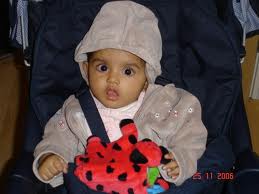
Alex [AK] - Posts: 3436
- Joined: Fri Jun 15, 2007 10:01 pm
It's totally superficial, made to look good while still protecting, even exaggerating the features of the wearer.http://upload.wikimedia.org/wikipedia/commons/thumb/c/ce/Museo_archeologico_regionale_paolo_orsi%2C_corazza_in_bronzo%2C_da_tomba_5_necropoli_della_fossa%2C_370-340_ac._01.JPG/220px-Museo_archeologico_regionale_paolo_orsi%2C_corazza_in_bronzo%2C_da_tomba_5_necropoli_della_fossa%2C_370-340_ac._01.JPG
-
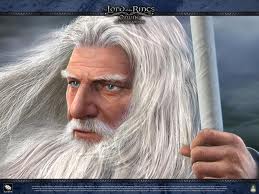
saharen beauty - Posts: 3456
- Joined: Wed Nov 22, 2006 12:54 am
The problem is not really something piercing the briastplate, it's crushing injury from your own armor. Having metal curved in at your sternum + getting hit with heavy blows= not a good combination.
That would be very hard to do with the briastplate. A mace would have been effective against the lighter plates on limbs, and against the head, because even helmeted it's possible to give somebody a concussion or even break their neck with a good shot. But the briastplate was a very thick piece of armor, the thickest in the suit, and would largely have been impenetrable to a mace or sword. Perhaps a warhammer spike could pierce the briastplate, but it would have taken some effort.
-
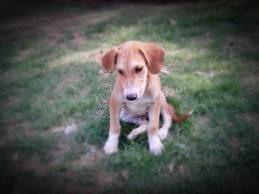
Chris Guerin - Posts: 3395
- Joined: Thu May 10, 2007 2:44 pm
It's totally superficial, made to look good while still protecting, even exaggerating the features of the wearer.http://upload.wikimedia.org/wikipedia/commons/thumb/c/ce/Museo_archeologico_regionale_paolo_orsi%2C_corazza_in_bronzo%2C_da_tomba_5_necropoli_della_fossa%2C_370-340_ac._01.JPG/220px-Museo_archeologico_regionale_paolo_orsi%2C_corazza_in_bronzo%2C_da_tomba_5_necropoli_della_fossa%2C_370-340_ac._01.JPG
Yeah, good example. I knew I had seen at least one Greek hoplite briastplate that was stylized to look like a chest.
-
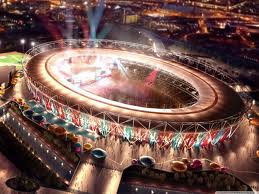
April - Posts: 3479
- Joined: Tue Jun 20, 2006 1:33 am
It's totally superficial, made to look good while still protecting, even exaggerating the features of the wearer.http://upload.wikimedia.org/wikipedia/commons/thumb/c/ce/Museo_archeologico_regionale_paolo_orsi%2C_corazza_in_bronzo%2C_da_tomba_5_necropoli_della_fossa%2C_370-340_ac._01.JPG/220px-Museo_archeologico_regionale_paolo_orsi%2C_corazza_in_bronzo%2C_da_tomba_5_necropoli_della_fossa%2C_370-340_ac._01.JPG
-

Connor Wing - Posts: 3465
- Joined: Wed Jun 20, 2007 1:22 am
That would be very hard to do with the briastplate. A mace would have been effective against the lighter plates on limbs, and against the head, because even helmeted it's possible to give somebody a concussion or even break their neck with a good shot. But the briastplate was a very thick piece of armor, the thickest in the suit, and would largely have been impenetrable to a mace or sword. Perhaps a warhammer spike could pierce the briastplate, but it would have taken some effort.
Anyway, you misread my response. I'm talking about the force of impact driving your own armor into your sternum.
-
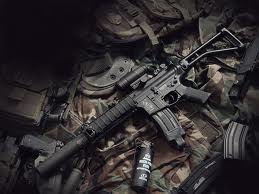
xxLindsAffec - Posts: 3604
- Joined: Sun Jan 14, 2007 10:39 pm
Specifically, I was thinking of the steel plate armor. As far as effectiveness goes, it just doesn't make sense to shape it like that.
Lydia looks really good in a suit of glass armor.
Lydia looks really good in a suit of glass armor.
I think she looks really good in Ebony. I had her wearing Dwarven for the most part but it didn't look right so I opted to try and match her with my full Daedric set. I don't have her wear the Helm (Ebony) though.
I really like Ancient Nord on Females.. yes i'm looking @ you Aela..

-
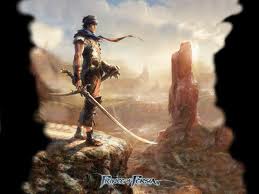
Elisabete Gaspar - Posts: 3558
- Joined: Thu Aug 31, 2006 1:15 pm
How do you get a thick piece of plate to make nice, shapely briasts?
-

Felix Walde - Posts: 3333
- Joined: Sat Jun 02, 2007 4:50 pm
